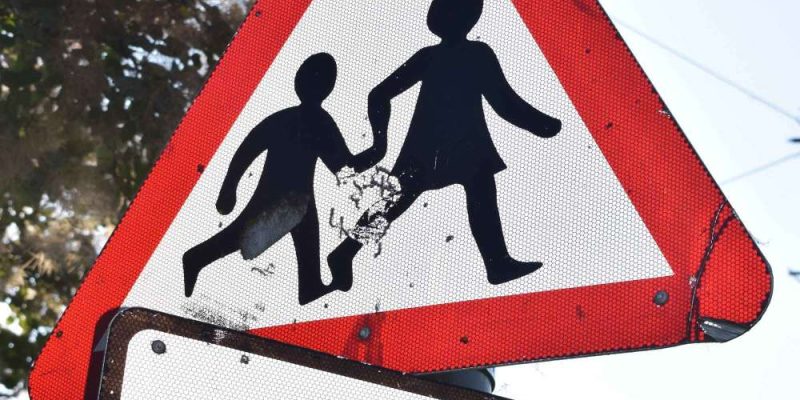
Aesthetic Aspects of Rumble Strips in Road Design
In road safety and urban design, rumble strips have long been a utilitarian feature, aimed primarily at reducing accidents and enhancing driver awareness. Traditionally, these strips have been valued for their functionality rather than their appearance.
However, as urban landscapes evolve, there’s a growing recognition of the importance of aesthetics in road design. Rumble strips, often seen as purely practical road safety features, are now being reimagined as elements that can contribute to the visual and artistic appeal of streetscapes.
Rethinking Rumble Strips: From Functional to Aesthetic
The standard image of typical uk rumble strips is that of a series of monotonous, linear grooves or raised bars along the edge of a road or across it. This perception is changing as urban planners and designers begin to see the potential for these features to enhance the beauty of a street or highway. The idea is not just to alert drivers through tactile feedback or audible rumbling but to do so in a way that is visually pleasing and integrated with the surrounding environment.
Incorporating Art into Road Safety
The concept of blending art with road safety is not entirely new, but it is gaining traction. Some cities have experimented with artistically designed rumble strips that incorporate patterns, colours, and textures. These designs can range from simple geometric patterns that add a touch of elegance to a street to more elaborate, vibrant designs that reflect local culture or history. In some cases, these artistic rumble strips become part of a larger theme or narrative that runs through a neighbourhood, turning roads into canvases that tell a story or celebrate local heritage.
Community Engagement and Identity
Artistic rumble strips can play a significant role in community engagement. Involving local artists, schools, and residents in the design process not only fosters a sense of community but also ensures that the designs resonate with the people who live and travel in the area. This collaborative approach can transform rumble strips from mere road safety features into symbols of community identity and pride.
Challenges and Considerations
While the idea of aesthetic rumble strips is appealing, there are practical considerations. The primary function of these strips – to alert and slow down drivers – must not be compromised. Therefore, any artistic design must maintain the strips’ tactile and auditory effectiveness. Additionally, the materials used need to be durable and able to withstand constant wear from traffic, as well as weather conditions.
Another challenge is ensuring that the designs do not become distractions for drivers. The aim should be to enhance the environment while keeping safety as the top priority. Striking the right balance between aesthetics and functionality is crucial.
There are emerging examples of aesthetically designed rumble strips around the world. For instance, a coastal town may use wave patterns on their strips, both as a nod to their maritime culture and as a calming visual element. In urban areas, geometric patterns in muted colours can add a modern touch to the streets while serving their safety purpose.
The integration of aesthetics into rumble strips represents a fascinating intersection of art, community, and road safety. This approach reflects a broader trend in urban design – where functionality and beauty are not seen as mutually exclusive but as complementary. By reimagining rumble strips as opportunities for artistic expression, cities and towns can enhance the visual appeal of their streetscapes, engage local communities, and celebrate their unique identities, all while maintaining the essential safety features these installations provide. This evolution in road design indicates a future where every element of our urban environment, no matter how functional, contributes to the aesthetic and cultural fabric of our communities.
The Use of Rumble Strips in Urban Settings
Rumble strips, traditionally associated with long stretches of highways and the outskirts of towns, are now finding their way into urban settings. This transition from rural to urban use marks an interesting evolution in road safety measures. The application of rumble strips in city environments is a response to unique urban challenges and serves as an innovative approach to enhancing pedestrian safety and managing traffic flow.
Adapting Rumble Strips for Urban Use
In urban landscapes, the primary function of rumble strips shifts from keeping drowsy drivers alert on highways to slowing traffic in areas with high pedestrian activity. The design of urban rumble strips often differs from their highway counterparts. They tend to be less aggressive in terms of vibration and noise, making them more suitable for densely populated areas where noise pollution can be a concern.
Strategic Placement for Maximum Impact
The placement of rumble strips in urban areas is a critical consideration. Near schools, parks, and residential zones, these strips can effectively slow down traffic, creating a safer environment for pedestrians, especially children. Another strategic location is at the approach to pedestrian crossings and roundabouts, where drivers need to be extra cautious.
Urban rumble strips also serve as visual cues, alerting drivers that they are entering zones where they should drive more slowly and be vigilant for pedestrians and cyclists. Their visual aspect can be enhanced with bright colours or patterns, making them an integral part of the urban aesthetic.
Balancing Safety and Community Needs
In implementing rumble strips in urban areas, city planners face the challenge of balancing safety objectives with community needs. For instance, while rumble strips are effective in reducing speed, they can generate noise that may be disruptive in residential neighbourhoods. Therefore, the design and placement require careful planning and, often, community consultation to ensure that the benefits outweigh any potential drawbacks.
Innovative Designs for Urban Contexts
Innovation in the design of urban rumble strips is on the rise. Some cities are experimenting with temporary or removable rumble strips that can be used during specific times (like school opening and closing hours) and then removed to minimise disturbance at other times. There are also developments in materials and textures that create the necessary tactile feedback for drivers but with reduced noise levels.
Examples from various cities can be highlighted to show how urban rumble strips have successfully calmed traffic and improved safety. For instance, a city might implement rumble strips in a busy downtown area, resulting in a measurable decrease in traffic accidents and speeding incidents.
The use of rumble strips in urban settings is a testament to the adaptability and versatility of this road safety feature. As cities continue to grow and evolve, the need for innovative and effective traffic calming measures becomes increasingly crucial. Urban rumble strips, with their unique design and strategic placement, offer a promising solution to enhance safety for pedestrians and drivers alike. By carefully considering their impact on the community and adapting their design to suit urban needs, these strips can significantly contribute to safer and more livable city environments.
















